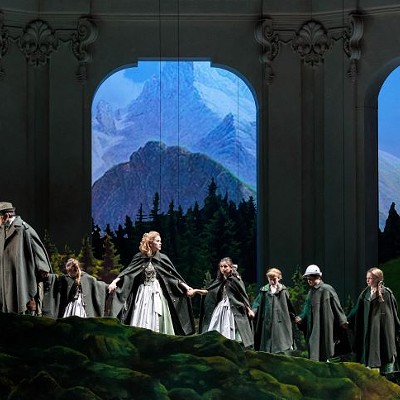Support Us
Houston's independent source of
local news and culture
account
- Welcome,
Insider - Login
- My Account
- My Newsletters
- Contribute
- Contact Us
- Sign out
[
{
"name": "Related Stories / Support Us Combo",
"component": "11591218",
"insertPoint": "4",
"requiredCountToDisplay": "4"
},{
"name": "Air - Billboard - Inline Content",
"component": "11591214",
"insertPoint": "2/3",
"requiredCountToDisplay": "7"
},{
"name": "R1 - Beta - Mobile Only",
"component": "12287027",
"insertPoint": "8",
"requiredCountToDisplay": "8"
},{
"name": "Air - MediumRectangle - Inline Content - Mobile Display Size 2",
"component": "11591215",
"insertPoint": "12",
"requiredCountToDisplay": "12"
},{
"name": "Air - MediumRectangle - Inline Content - Mobile Display Size 2",
"component": "11591215",
"insertPoint": "4th",
"startingPoint": "16",
"requiredCountToDisplay": "12"
}
,{
"name": "RevContent - In Article",
"component": "12527128",
"insertPoint": "3/5",
"requiredCountToDisplay": "5"
}
]
Texas has a deserved reputation as a rugged state, and it certainly has its fair share of wildlife that it's best to avoid when possible. Texas also scores high in the creepy critter department, with countless varieties of insects and spiders choosing to live in the Lone Star State alongside its human population. They range from harmless to potentially dangerous to people or pets, but it should be noted that most play an important role in the areas ecology, even if few of us would want to share our sleeping bags with one of them. Let's take a look at some of the multi-legged creatures that make their homes in and near ours.
6. Cockroaches!
These bugs are such a part of Houston life in particular, that they deserve that exclamation point. There are several varieties, including the American Cockroach and German Cockroach, and they're ideal habitat is the Texas Gulf Coast. Possibly much more alarming to the average person, is that cockroaches like to live around the same types of stuff we do, and our homes provide all the food, water, and shelter that cockroaches need in order to thrive. While no roaches in the Houston area pack a venomous bite (thankfully), cockroaches can spread diseases and their populations can explode overnight. Some people are also allergic to roaches, adding to a long list of why it's not a great idea to live around these unpleasant home invaders.
5. Spiders
Fear of spiders is fairly common across the world, but most arachnids are a lot more helpful than harmful, playing a major role in controlling pest populations. That said, their are several types of spiders in Texas that can be harmful to us, and they are well worth keeping an eye out for. While all spiders have venom, only two species in the state are dangerous, and those are the from the recluse and widow families.
There are several different types of recluse spiders, but the one most Texans are familiar with is the dreaded brown recluse. Although they're tiny, the bite from a "fiddleback" as they're also known, can itch or sting, but it'll often be followed by intense pain, fever, and chills, before erupting into an ulcerating lesion. Having seen photos of the resulting wounds caused by their bite, I feel certain no one wants to be bitten by a brown recluse spider.
The second type of dangerous spider which makes its home here are several species of widow spiders including the southern black widow. They are fairly small at around one and a half inches, and the female southern black widow usually has a distinctive hourglass marking on its back. The bite of a black widow is extremely unpleasant and includes symptoms such as severe muscle cramps, spasms, intense pain, and tachycardia, although it's generally not fatal to a healthy adult.
Recluse and widow spiders are worth looking out for, and don't make nice cuddle buddies, so it's a good idea to keep an eye out for them.
4. Scorpions
Texas is home to many types of scorpions, and in Houston the most commonly encountered species is the striped bark scorpion. They're commonly found under rocks and other ground cover, and occasionally into human dwellings. Although usually not deadly, their sting isn't anything anyone wants to endure, because it causes reactions ranging from intense localized pain to abdominal cramps and difficulty breathing. Many Texans grew up being taught to shake out their boots before putting them on, and critters like the striped bark scorpion are a good reason to observe that practice.
KEEP THE HOUSTON PRESS FREE...
Since we started the Houston Press, it has been defined as the free, independent voice of Houston, and we'd like to keep it that way. With local media under siege, it's more important than ever for us to rally support behind funding our local journalism. You can help by participating in our "I Support" program, allowing us to keep offering readers access to our incisive coverage of local news, food and culture with no paywalls.
Trending Arts & Culture
- Bring a Friend With You to See A.D. Players' Heartwarming Production of Driving Miss Daisy.
- Reviews For The Easily Distracted:
Boy Kills World - Best Bets: Earth Day, Noche Caliente and a Spring Festival
-
Sponsored Content From: [%sponsoredBy%]
[%title%]

Don't Miss Out
SIGN UP for the latest
arts & culture
news, free stuff and more!
Become a member to support the independent voice of Houston
and help keep the future of the Houston Press FREE
Use of this website constitutes acceptance of our
terms of use,
our cookies policy, and our
privacy policy
The Houston Press may earn a portion of sales from products & services purchased through links on our site from our
affiliate partners.
©2024
Houston Press, LP. All rights reserved.




